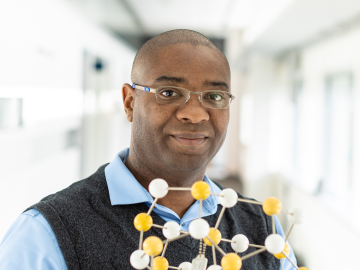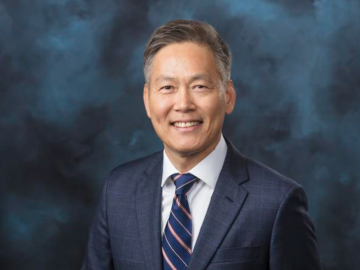
Filter News
Area of Research
- (-) Biology and Environment (51)
- (-) Materials (75)
- Advanced Manufacturing (6)
- Biology and Soft Matter (1)
- Clean Energy (54)
- Climate and Environmental Systems (2)
- Computational Engineering (1)
- Electricity and Smart Grid (1)
- Functional Materials for Energy (2)
- Fusion and Fission (1)
- Fusion Energy (1)
- Isotopes (4)
- Materials Characterization (2)
- Materials for Computing (11)
- Materials Under Extremes (1)
- Mathematics (1)
- National Security (7)
- Neutron Science (15)
- Supercomputing (32)
News Topics
- (-) Climate Change (44)
- (-) Materials (78)
- 3-D Printing/Advanced Manufacturing (27)
- Advanced Reactors (4)
- Artificial Intelligence (15)
- Big Data (11)
- Bioenergy (51)
- Biology (73)
- Biomedical (20)
- Biotechnology (13)
- Buildings (5)
- Chemical Sciences (35)
- Clean Water (14)
- Composites (11)
- Computer Science (34)
- Coronavirus (14)
- Critical Materials (13)
- Cybersecurity (5)
- Decarbonization (25)
- Energy Storage (37)
- Environment (101)
- Exascale Computing (6)
- Frontier (6)
- Fusion (8)
- Grid (8)
- High-Performance Computing (24)
- Hydropower (8)
- Irradiation (1)
- Isotopes (13)
- ITER (1)
- Machine Learning (12)
- Materials Science (82)
- Mathematics (4)
- Mercury (7)
- Microscopy (34)
- Molten Salt (3)
- Nanotechnology (42)
- National Security (5)
- Net Zero (3)
- Neutron Science (36)
- Nuclear Energy (16)
- Partnerships (12)
- Physics (30)
- Polymers (18)
- Quantum Computing (3)
- Quantum Science (11)
- Renewable Energy (2)
- Security (3)
- Simulation (16)
- Space Exploration (2)
- Summit (11)
- Sustainable Energy (42)
- Transformational Challenge Reactor (3)
- Transportation (15)
Media Contacts

Valentino “Tino” Cooper, a scientist at ORNL, has been appointed to DOE’s Basic Energy Sciences Advisory Committee for a three-year term. Cooper’s research elucidates the fundamental understanding of advanced materials for next-generation energy and information technologies.

Climate change often comes down to how it affects water, whether it’s for drinking, electricity generation, or how flooding affects people and infrastructure. To better understand these impacts, ORNL water resources engineer Sudershan Gangrade is integrating knowledge ranging from large-scale climate projections to local meteorology and hydrology and using high-performance computing to create a holistic view of the future.

Andrew Lupini, a scientist and inventor at ORNL, has been elected Fellow of the Microscopy Society of America.

Andrew Ullman, Distinguished Staff Fellow at Oak Ridge National Laboratory, is using chemistry to devise a better battery

Ho Nyung Lee, a condensed matter physicist at the Department of Energy’s Oak Ridge National Laboratory, has been elected a Fellow of the Materials Research Society.

A series of new classes at Pellissippi State Community College will offer students a new career path — and a national laboratory a pipeline of workers who have the skills needed for its own rapidly growing programs.

The Center for Bioenergy Innovation has been renewed by the Department of Energy as one of four bioenergy research centers across the nation to advance robust, economical production of plant-based fuels and chemicals.

Alice Perrin is passionate about scientific research, but also beans — as in legumes.

Warming a crystal of the mineral fresnoite, ORNL scientists discovered that excitations called phasons carried heat three times farther and faster than phonons, the excitations that usually carry heat through a material.

Oak Ridge National Laboratory scientists set out to address one of the biggest uncertainties about how carbon-rich permafrost will respond to gradual sinking of the land surface as temperatures rise.


